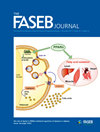投稿信息
稿件收录要求
The online edition of the prestigious journal of The Federation of American Societies for Experimental Biology.
The FASEB Journal only accepts submissions electronically. If this is the first time you are using the online submission site, or you would like to review our procedures, please see our online submission information page for an overview.
Submission and Publication Fees
Expectation: The editors expect that all authors read and approve every, page, figure, reference, etc. in every manuscript they submit to The FASEB Journal. The editors also expect that every author be thoroughly familiar with the journal, and have read the Information for Authors and Editorial Policies sections prior to submission.
Scope: The FASEB Journal publishes international, transdisciplinary research covering all fields of biology at every level of organization: atomic, molecular, cell, tissue, organ, organismic and population. While the journal strives to include research that cuts across the biological sciences, it also considers submissions that lie within one field, but may have implications for other fields as well. The journal seeks to publish basic and translational research, but also welcomes reports of pre-clinical and early clinical research. In addition to research, review, and hypothesis submissions, The FASEB Journal also seeks perspectives, commentaries, book reviews, and similar content related to the life sciences in its Up Front section.
Submission and Publication Fees: There is a $50 manuscript processing fee due at the time of submission for manuscript. This fee can only be paid by credit card. When a submission is published, authors will be responsible for paying publication fees. Publication charges are $199 per printed page. Supplemental units (maximum of 10) uploaded to the journal website are $199 for each unit (maximum charge for supplemental data is $796). A supplemental unit is defined as one 8.5 x 11 inch page of text or figures with 1 inch margins using Times New Roman, Courier, Arial, Calibri, and/or Tahoma fonts at 9 points or larger. For multimedia files (i.e. audio or video), each file is considered one unit. All amounts are in U.S. dollars.
Submission types: The FASEB Journal accepts four types of submissions. These are research, review, hypothesis, and up-fron articles. For more information about how to submit each, please use the following links:
Revised Manuscript Submissions: Pending appropriate revisions requested by the Editors and/or reviewers, some manuscripts will be acceptable for publication in The FASEB Journal. When uploading the revised version, authors should include in the cover letter an itemized list of all changes made, or a rebuttal, in response to each of the suggestions.
The FASEB Journal's production staff will attempt to use the most recently submitted materials to prepare articles for publication. For manuscripts accepted for publication pending appropriate revisions, authors are strongly encouraged to provide preferred file formats for production at the next stage of review. The preferred format for text files is Microsoft Word, but RTF files are also acceptable. The preferred formats for figure files are TIF, EPS, PowerPoint, or PDF (if made from the original file format). Please see figure specifications for details on image preparation. Do not embed figures in the manuscript file. If the authors do not provide review files in these formats, the manuscript may be returned for correction prior to review.




